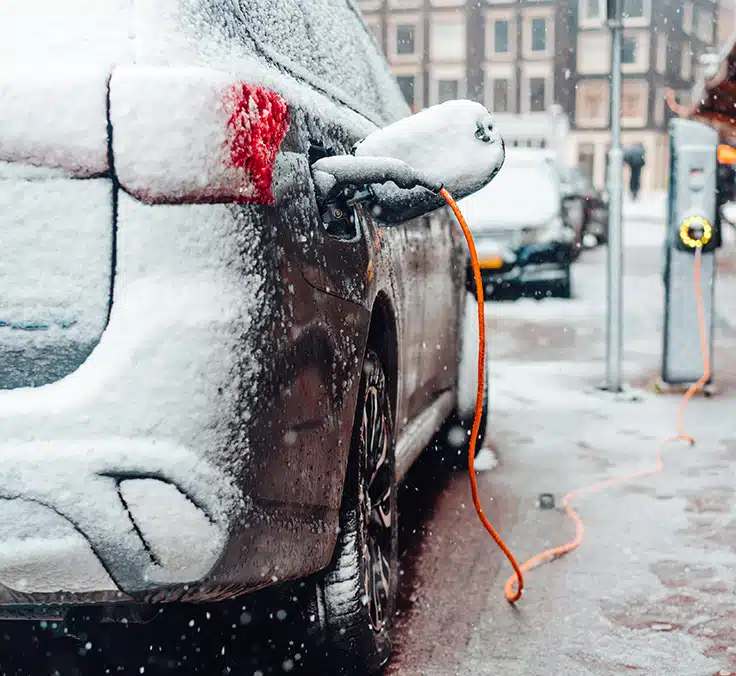INSURANCE| 04.04.2024
The challenge of hay fever: allergy sufferers drive dangerously
Seasonal challenges increase the risk of accidents in spring. With the arrival of spring, not only the temperature rises, but also the risk of accidents. Verti Versicherung AG knows the springtime challenges on the road and provides tips for safe driving behavior.
For many, the first blossoms in spring also mark the start of hay fever season. According to the Robert Koch Institute, around 15 percent of Germans suffer from the symptoms of hay fever: these include increased tiredness and, above all, sudden sneezing attacks.
Sneezing attacks in the car can lead to dangerous situations
“Sneezing attacks while driving can lead to dangerous situations,” warns Alexander Held, motor vehicle and insurance expert at Verti Versicherung AG. “When we sneeze, we reflexively close our eyes for a second, which means that we are blind for almost 15 meters in urban areas and even well over 30 meters on the freeway at speeds of 120 or 130 km/h.” Even if you are looking for tissues that you have put in your pocket, you are distracted for a moment.
“While rummaging around is generally considered to be gross negligence, which puts your insurance cover at risk, this is not generally assumed in the case of a sneezing fit,” explains Alexander Held. Therefore, after an accident caused by sneezing, the insurance company usually pays – the motor vehicle liability insurance pays for the damage caused to others, the fully comprehensive insurance pays for the damage to your own car. The insurance expert adds: “However, drivers are generally obliged to drive carefully and with mutual consideration. It is therefore essential to keep a sufficient distance from the vehicle in front and – If you get a tingling sensation in your nose – pull over if possible, stop and only continue driving after sneezing and blowing your nose.”
Maintain ventilation systems and clean the vehicle interior regularly
To minimize the risk of a sneezing fit, regular maintenance of the air conditioning and ventilation systems and replacement of pollen filters in the vehicle are recommended. “If this has not been changed for a while, you should definitely keep the windows closed and switch the air conditioning to recirculated air,” advises Alexander Held. Regular cleaning of the vehicle interior is also recommended to minimize dust accumulation and reduce exposure to allergens. The following is also important to the car expert: “Despite the pollen outside, breaks are essential on longer car journeys – allergy sufferers should seek out air-conditioned interiors if possible,” recommends Alexander Held.
However, caution is advised with medication: For example, anti-allergic nasal sprays can help to prevent sneezing attacks. “On the other hand, many medications cause side effects such as tiredness or a reduced ability to react and can therefore impair your ability to drive,” he explains. Unlike unexpected sneezing fits, drivers who take such medication and cause an accident risk losing their insurance cover. This applies in particular to self-medication, as practiced by many allergy sufferers.
Increased risk of accidents due to spring tiredness and time changes
The period immediately after the changeover to summer time at the end of March also poses an increased risk on the roads. The missing hour of sleep can impair drivers’ concentration and ability to react. Added to this is the well-known “spring fatigue”. The body has to adjust its biorhythm to warmer temperatures. “Dilated blood vessels and falling blood pressure can easily lead to slower reactions and inattention during this phase,” says Alexander Held. Outdoor exercise helps to combat spring or other fatigue. “So the same applies here: make sure you take enough breaks – or at least open the window for a dose of oxygen on shorter journeys,” says the vehicle expert.
Cold snap in spring: the importance of the right tires
Spring is also known for its capricious weather, which can lead to sudden cold snaps in April. Drivers who have already switched to summer tires should definitely switch to public transport in snowy and icy conditions: “This is because the so-called situational winter tire obligation also applies in spring,” emphasizes Alexander Held. “Anyone who drives with unsuitable tires despite winter road conditions risks not only fines, but also the loss of insurance cover in the event of an accident.”
RELATED ARTICLES:



